The law that could make L.A. a lot wilder

By Mary Forgione
Hello readers of The Wild.
U.S. Rep. Adam Schiff likes to be out in nature. You might see him on a night hike in Griffith Park or running up the steep trail from the Stough Canyon Nature Center in Burbank to the top of the ridgeline. And, of course, people recognize him. “I do have those who want to talk about peace in the Middle East, but for the most part people are friendly,” he said on a Monday phone call.
Schiff also looks out for his wild constituents, the ones that don’t vote. He’s proud that mountain lions and bears dwell in his 28th District, which includes Griffith Park and the Hollywood Hills, La Canada-Flintridge and Tujunga to the north, and Echo Park and the Elysian Valley to the east. “I’m delighted when I meet with people from Africa and they tell me about their lions, and I can say ‘I’ve got lions,’ ” he said.
Two decades ago Schiff floated the idea of the Rim of the Valley Corridor Preservation Act that would give federal protection to 191,000 acres of land that encircle the San Fernando Valley, from the Simi Hills and Santa Susana Mountains to the Verdugo and San Gabriel mountains. If enacted, the plan would more than double the size of the Santa Monica Mountains National Recreation Area, protect key wildlife corridors so mountain lions could roam more freely, and honor ancient and historic sites, such as a Native American water source and downtown’s Olvera Street.
Congress funded a study on the plan during the George W. Bush administration. The study and comment period took place during the Obama years. The bill to make the plan real made it through the House during the Trump era but was never heard by the full Senate.
Now it will. Schiff’s bill passed the House on Feb. 12 with a vote of 231-183 and will now move to the Senate. “I’m hopeful we can do it now that the Senate is in Democratic hands,” Schiff said. “So this is the year.”
What inspired him to go the distance? He talked about the late Rep. Anthony Beilenson (D-Woodland Hills), who saw the need to act amid the collision course between L.A.’s rapid expansion and its unprotected wilderness. “He created the Santa Monica Mountains National Recreation Area, and it became one of the most heavily utilized parks in the country,” Schiff said. “You know, 20 years ago we were at a similar crossroads as we are right now where a lot of mountains around us are being developed and a lot of wildlife is being cut off and if we don’t act now, then the next generation isn’t going to be able to enjoy this incredible nature.”
3 things to do this week
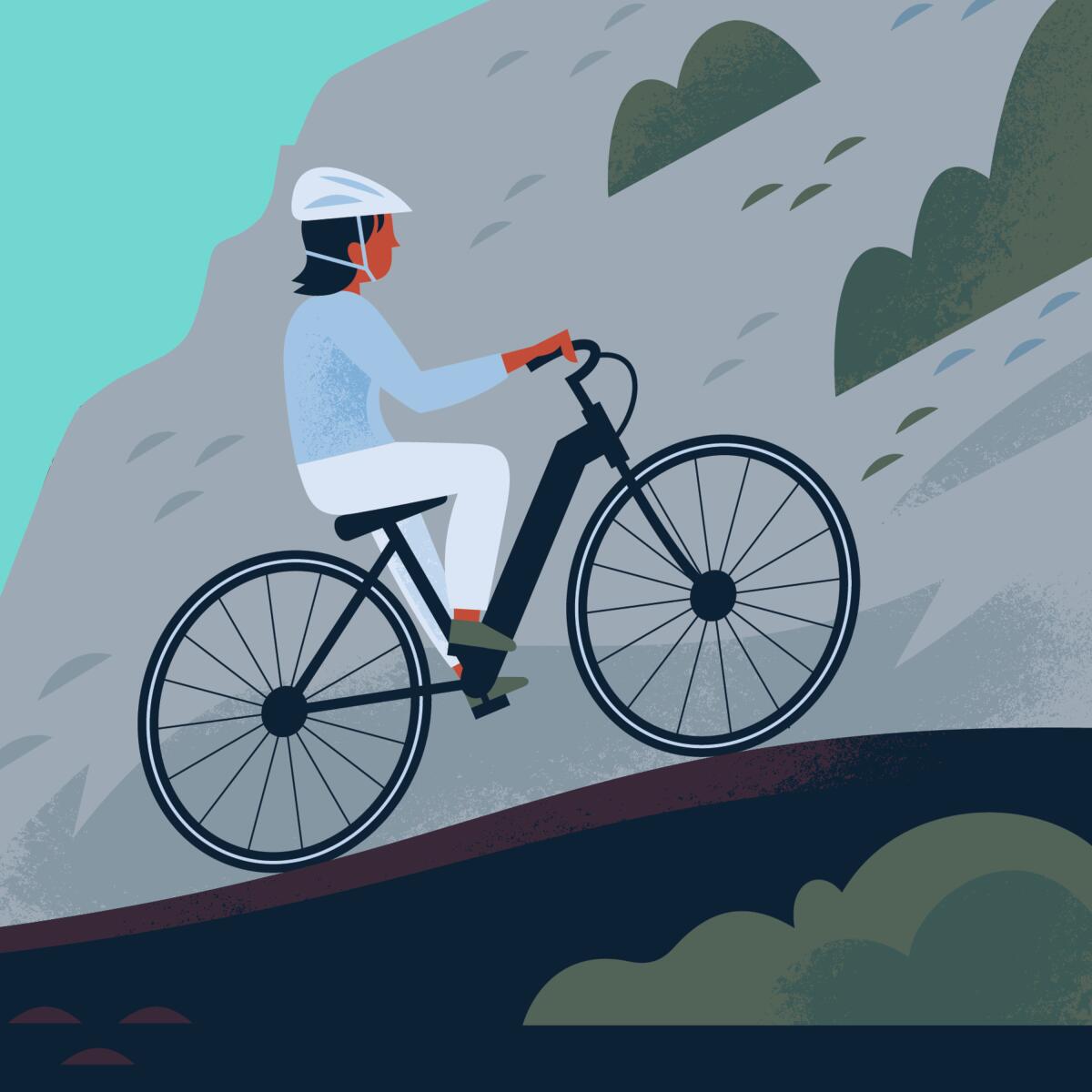
1. Learn how to ride an e-bike in a one-hour online class. E-bikes are booming right now, but do you know how to use one? L.A. Metro sponsors all kinds of classes about bicycles, such as safety, how to fix a flat, etc., in an effort to get us out of our cars and onto a greener means of transportation. The upcoming Bicycling 101 class will cover the differences between electric and traditional bikes, and how to get the most out of your e-ride. By the way, you can find plenty of e-bike stands around the city, including Metro Bikes. The online class runs from noon to 1 p.m. March 18; sign up for free here.
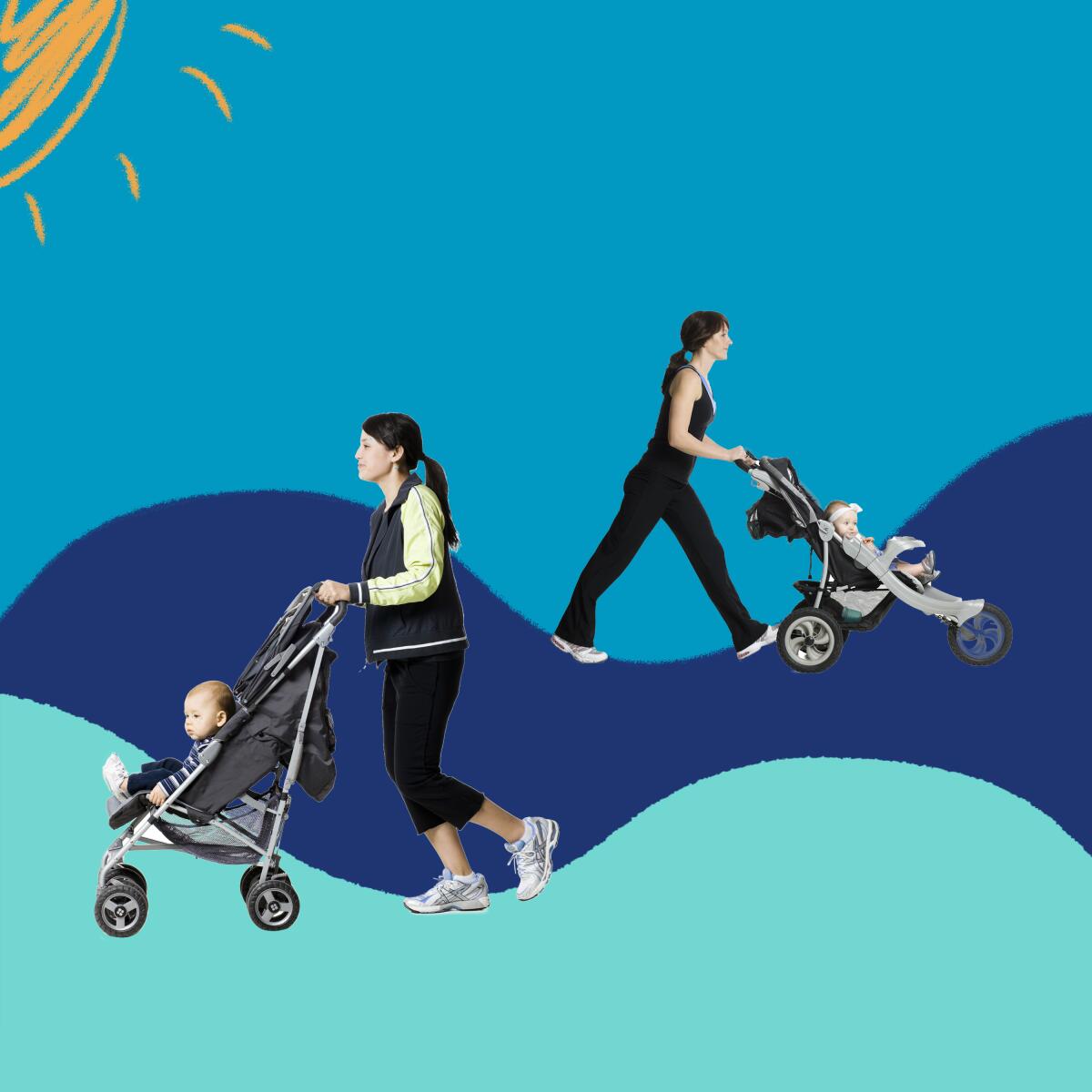
2. Stroller-friendly routes for L.A.’s newly minted hikers. Reader Craig Gaines writes: “I’d love to read a roundup of activities my wife and I can do with our 3-month-old. We’re getting a bit of pandemic cabin fever, but our little girl narrows our outdoor options. Anything that’s friendly to strollers or baby carriers, has good shade and isn’t overrun with visitors would offer a welcome change of pace.”
The first place that comes to mind is Malibu Creek State Park in the Santa Monica Mountains. It has wide, dirt trails that you can roll on as far as you like. The path from the main parking lot has a creek on one side (if you choose to explore) and picnic tables under oak trees on the other side. If you’re really energetic, you can walk the three uphill miles with a baby carrier to Century Lake and spend time there; it’s a pretty man-made water spot that’s also shaded.
One caveat: The COVID-19 pandemic has made trails more crowded, especially on weekends. But don’t let that keep you from going. These trails are wide enough to keep your distance and allow enough space to find a quiet turnoff. Also, check out these nine stroller-suitable hiking trails from the Mommy Poppins blog.
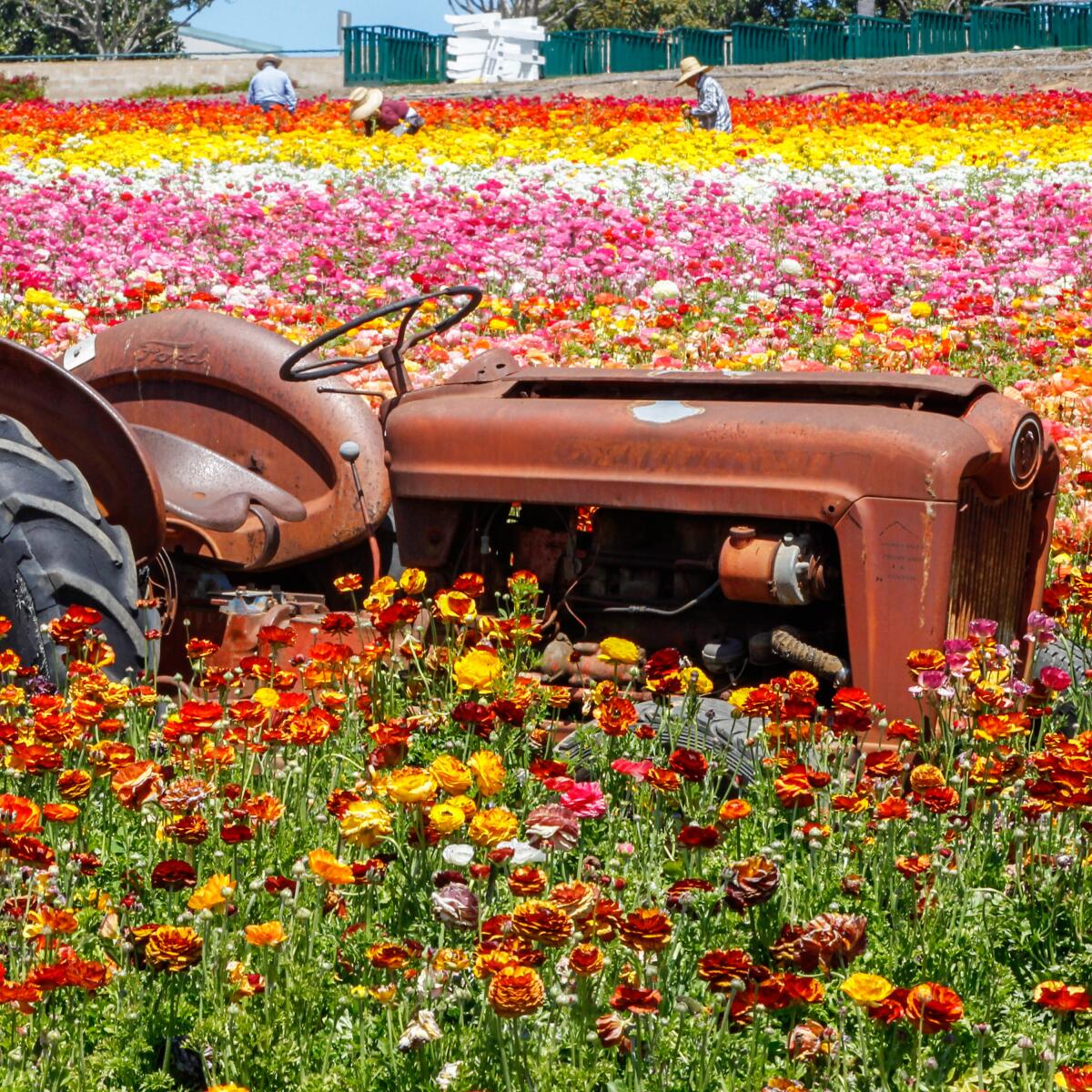
3. Walk amid the color-filled flower fields in Carlsbad. Giant ranunculus look like round, coiled roses with ruffled petals, though they are not related to roses. Carlsbad Ranch, about 30 miles south of San Clemente, plants and harvests them for commercial use. For the last 40 years, the ranch has invited spring visitors to walk through rows of brightly colored blooms. They aren’t wildflowers, but they do impress. The Flower Fields opened Monday to all who want to wander through 50 acres of blooms. Check out this drone footage of past flower field colors. There’s also a sweet pea maze, poinsettia and orchid displays and a new blueberry patch where you can pick your own berries. COVID-19 precautions are in place (you know the drill by now), which means you must buy a ticket in advance (no on-site sales), wear a mask and stay at least 6 feet from others. Online tickets cost $20 for adults, $10 for ages 3 to 10 years old, plus a service fee. The fields are open through May 9. More info here and the full story on this season’s Flower Fields.
The must-see
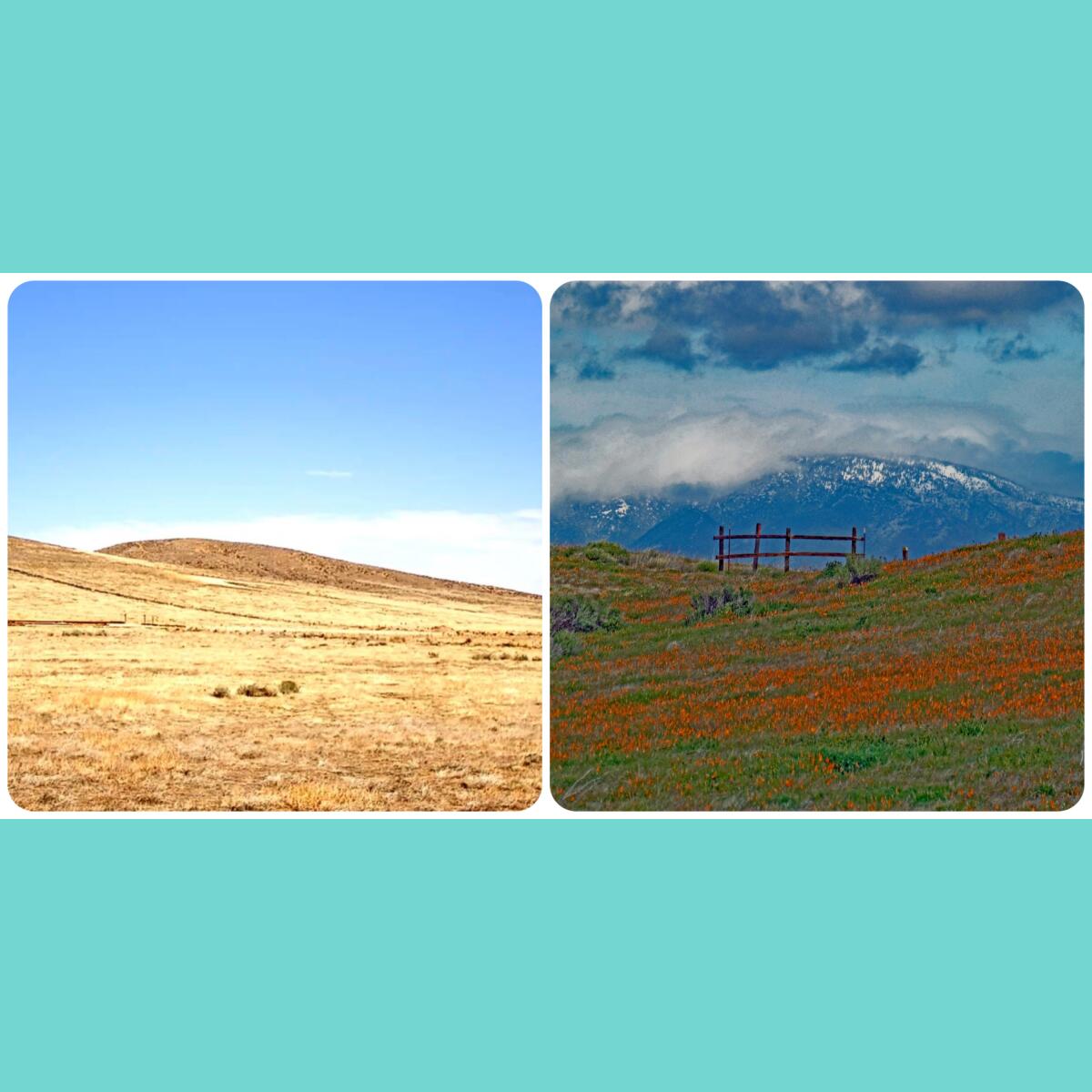
What a difference a year makes. The photo on the left is a recent screenshot from the Antelope Valley California Poppy Reserve in Lancaster. On the right is a photo shared by reader Georgianna Erskine of Pasadena. She visited the reserve at the end of February 2020. “It was taken between two rainstorms,” she wrote in an email. “The fence was hidden by the clouds. It appeared as I clicked the shutter!”
I wrote earlier about the sparse to moderate wildflower forecasts at rain-starved deserts from Joshua Tree and Death Valley to Anza-Borrego. Desert visitors may get lucky and see pockets of flowers blooming in some areas. But remember: A spring trip to the desert is always worthwhile when temperatures are mild for hiking and exploring. To learn where wildflowers bloom now, the Wild Flower Hotline hosted by the Theodore Payne Foundation starts Friday and continues through May. You can listen to recorded reports at (818) 768-1802 or go online here.
Wild things
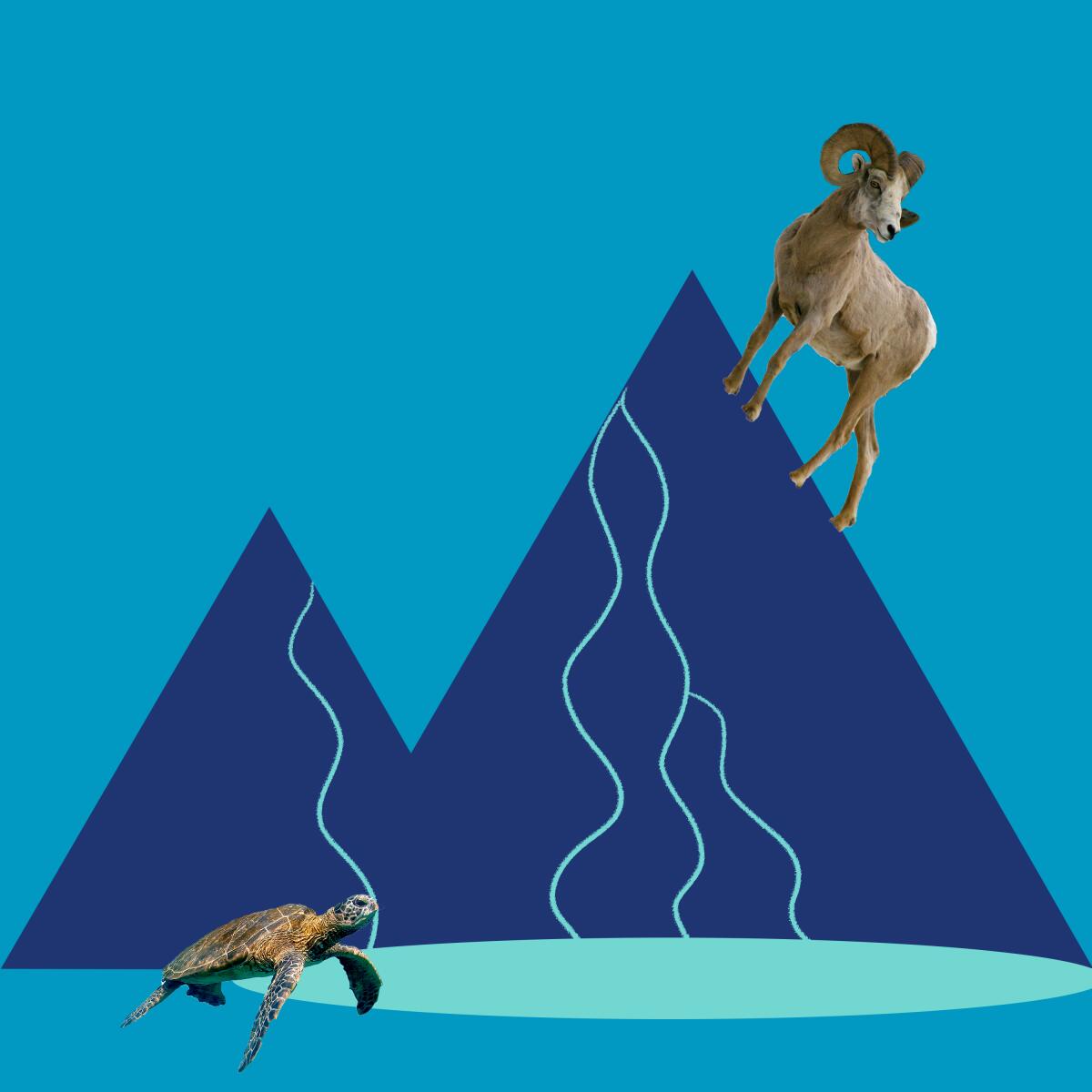
“We live in a spot where it’s possible to see a bighorn sheep and a green sea turtle in the same day, in the same watershed,” says Greg Pauly, curator of herpetology at the Natural History Museum of L.A. County. Wait, whaaat? Both animals thrive in different parts of the San Gabriel Mountains: the bighorn sheep at high elevations, the sea turtles in the Lower San Gabriel River in Long Beach. But they share a common water source in the 689-square-mile drainage area. “That’s amazing, right?” Pauly said. Indeed, which is why he and a team in 2019 wrote “Wild L.A: Explore the Amazing Nature In and Around Los Angeles.” The pandemic is a good time to read about different habitats and species all around us, and where to find them. If you missed it when it first came out, you can still grab a copy here ($24.95), and read this L.A. Times story about the book and its authors.
The must-read

The saga of the California condors being brought back from the edge of extinction continues, but with a disturbing new twist. For decades the condors fell prey to lead poisoning from eating bullet-ridden carrion and other urban dangers. Now they face a new risk of death: spinning turbine blades of alternative energy windmills. My Times colleague Louis Sahagún tells the story: “Now, federal wildlife authorities are taking the unprecedented and controversial step of helping a wind energy company breed the scavengers in captivity, so that they can replace any birds that are killed by the massive wind converters.” This is unusual but is it wise? Today there are 518 condors, 181 in captivity and 337 soaring over parts of southern and central California, the Grand Canyon in Arizona and Baja California, Mexico. Read the full story here.
Social moment
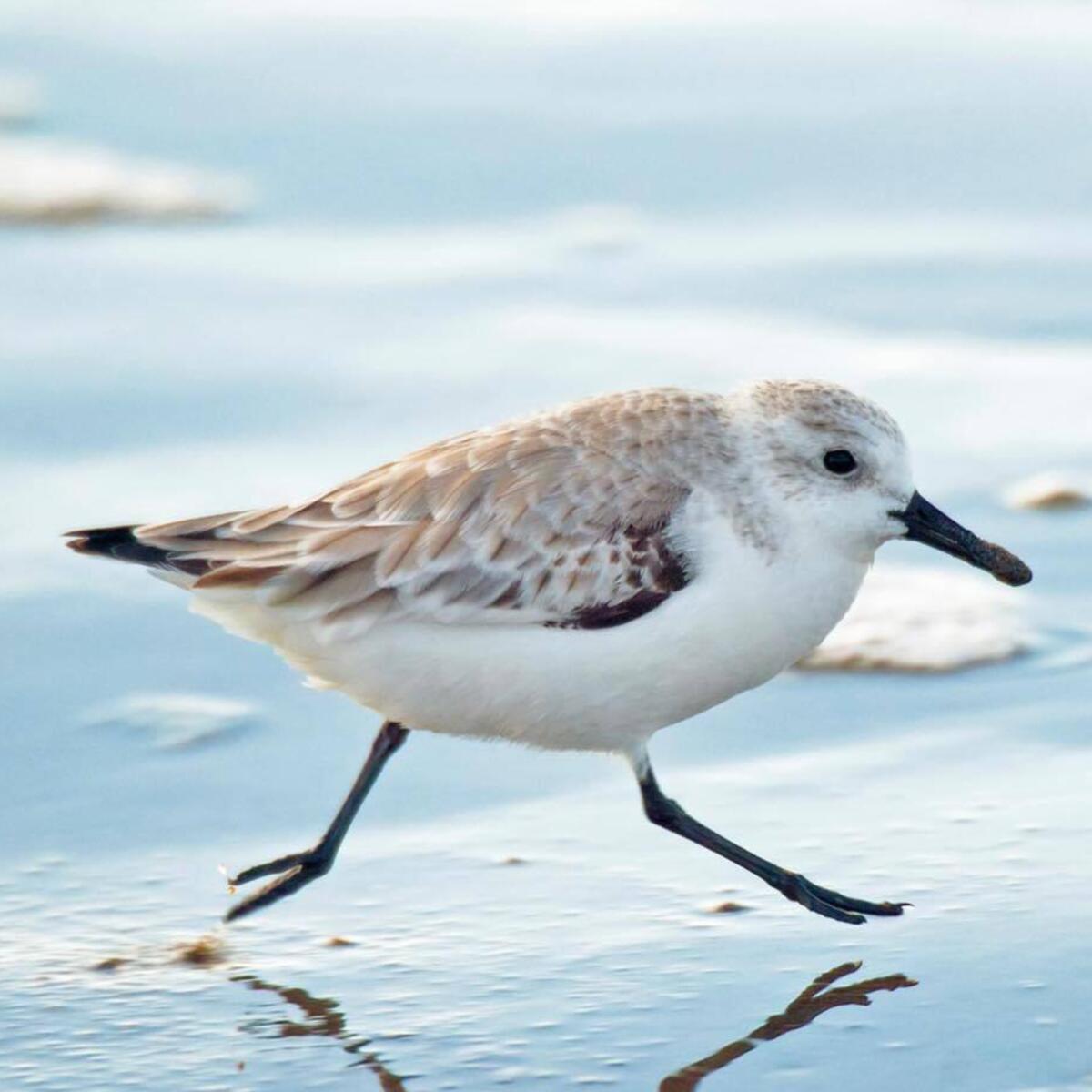
Sanderlings run around Southern California beaches. But what would their dating profile look like? Here’s a clue, thanks to this National Park Service post on Facebook.
Status: Single
About me: I like long walks up the beach and down the beach and up the beach and down the beach ... and up the beach and down the beach.
Description: My legs are often a blur as I frolic back and forth on the beach, picking and probing for tiny prey in the wet sand left by receding waves. I can usually be identified by my medium-sized build and dark bill. In regards to chasing waves, some might call it obsessive. Red flag? I meant committed. Oooh... look at that wave!
P.S. Hobbies are a plus. Do you like birding?
So extreme
Hands down the most compelling story I read this week: Keith Eckert’s day-by-day diary of running 350 miles of the 2020 Iditarod Trail Invitational in Alaska. You heard right ... running. Better known for the dog-sledding race, the invitational follows a historic out-and-back route that starts in Knik Lake, about 57 driving miles from Anchorage.
The website warns participants: “The route is not marked. Anyone who is not comfortable navigating in harsh winter conditions over potentially dangerous terrain in the wilderness should not participate in this race.”
The photos of Eckert, who lives in San Diego, and his buddy running in snowshoes, pulling sleds of gear, sleeping in bone-chilling minus-50 temps and encountering moose, so many moose, take on an otherworldly tone. Nothing comes easy, not even boiling water to drink. Then there’s this: “My running partner was experiencing some mild hallucinations. We had a long way to go to Nikolai but pushed through. It again dropped down to -30 or so, and the hallucinations for my running partner were awful. He had not been sleeping well at all. He was shouting at the top of his lungs to stay awake, while running, and at this point barely experiencing reality.” Eckert shared his diary with Runner’s World. Reading this story will make your hardest run feel like a cakewalk.
Send us your thoughts
Share anything that’s on your mind. The Wild is written for you and delivered to your inbox for free. Drop us a line at [email protected].
Click to view the web version of this newsletter and share it with others, and sign up to have it sent weekly to your inbox. I’m Mary Forgione, and I write The Wild. I’ve been exploring trails and open spaces in Southern California for four decades.

Sign up for The Wild
We’ll help you find the best places to hike, bike and run, as well as the perfect silent spots for meditation and yoga.
You may occasionally receive promotional content from the Los Angeles Times.




